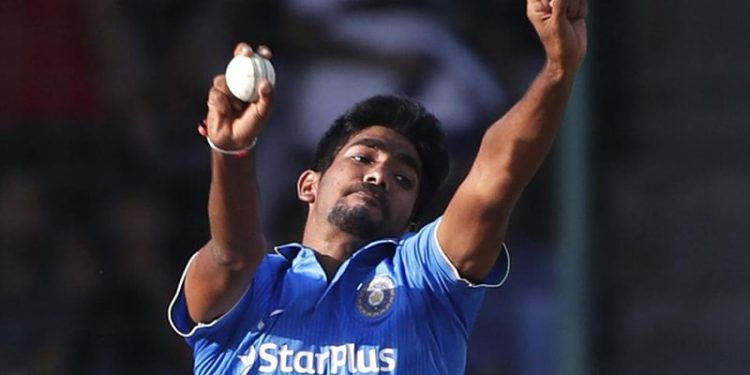How to Bowl Like a Pro?
Bowling in cricket is an art that requires skill, practice, and technique. Whether you’re a beginner or an experienced player looking to improve, mastering the art of bowling can take your game to the next level. In this comprehensive guide, we’ll unveil ten essential tips and techniques to help you bowl like a pro. From grip and stance to delivery and variations, we’ll cover everything you need to know to become a formidable bowler on the cricket field.
Table of Contents:
- Understanding the Basics: Grip and Stance
- Perfecting Your Run-Up
- Mastering the Delivery Stride
- Generating Pace and Swing
- Developing Spin Bowling Techniques
- Bowling Yorkers and Bouncers
- Maintaining Consistency in Line and Length
- Mental Preparation and Focus
- Analyzing the Batsman and Adjusting Your Strategy
- Practicing Regularly and Seeking Feedback
1. Understanding the Basics: Grip and Stance
The foundation of a good bowling action begins with the grip and stance. For fast bowlers, grip the ball with your index and middle fingers positioned close together on the seam, while the thumb supports the ball underneath. Medium pacers and spinners should experiment with different grips to find what works best for them. Your stance should be balanced, with your feet shoulder-width apart and your body facing the target.

Here are 5 tips for Grip and Stance:
- Find the Right Grip:
Start by holding the cricket ball with your index and middle fingers close together on the seam. Your thumb should support the ball underneath. Experiment with different grips to see which one feels comfortable and helps you control the ball better. - Balance Your Stance:
Stand with your feet shoulder-width apart and your body facing the batsman. Keep your weight evenly distributed between both feet to maintain balance. A balanced stance helps you stay in control and deliver the ball accurately. - Keep Your Eyes on the Target:
Focus on the batsman’s stumps as your target while bowling. Visualize where you want the ball to pitch and aim to hit that spot consistently. Keeping your eyes on the target helps improve your accuracy and increases your chances of taking wickets. - Relax Your Grip:
Avoid gripping the ball too tightly as it can affect your ability to control the ball. Instead, maintain a relaxed grip that allows you to release the ball smoothly and generate spin or pace. Practice holding the ball with a firm but gentle grip to find the right balance. - Practice Consistently:
Regular practice is key to improving your grip and stance as a bowler. Dedicate time to bowling drills and net sessions to refine your technique and build muscle memory. With consistent practice, you’ll develop better control over the ball and become a more effective bowler on the cricket field.
Example: Jasprit Bumrah
Jasprit Bumrah, the Indian fast bowler, is a great example of mastering grip and stance. He holds the ball with a unique grip, placing his index and middle fingers close together on the seam. His balanced stance and relaxed approach allow him to consistently deliver accurate and deceptive deliveries, making him one of the most feared bowlers in international cricket.
2. Perfecting Your Run-Up
A smooth and consistent run-up is crucial for generating momentum and power in your delivery stride. Find a comfortable rhythm and focus on maintaining a straight line towards the batsman. Avoid overstriding or rushing your approach, as this can affect your accuracy and control.
5 Tips for Perfecting Your Run-Up in Cricket Bowling
- Find Your Rhythm: Start by finding a comfortable rhythm for your run-up. Your run-up should feel natural and help you build momentum towards the batsman. Practice running in a straight line towards the wicket to maintain balance and control.
- Focus on Consistency: Consistency is key when it comes to your run-up. Aim to replicate the same approach every time you bowl. This helps in maintaining accuracy and control over your delivery stride.
- Maintain a Smooth Transition: As you approach the crease, focus on maintaining a smooth transition from your run-up to your delivery stride. Avoid sudden changes in speed or direction, as this can affect your balance and rhythm.
- Watch Your Foot Placement: Pay attention to where you plant your front foot as you reach the crease. Your front foot should land in line with the target, with your body facing towards the batsman. This helps in generating power and ensuring a stable base for your delivery.
- Practice Regularly: Practice makes perfect when it comes to perfecting your run-up. Dedicate time to practicing your run-up during net sessions and drills. Experiment with different lengths and speeds to find what works best for you. With consistent practice, you’ll be able to refine your run-up and bowl with confidence on the cricket field.
One of the best examples of a bowler with a perfected run-up is Wasim Akram, the legendary left-arm fast bowler from Pakistan. Akram had a smooth and effortless run-up that allowed him to generate pace and swing with ease. His balanced approach and consistent rhythm made him one of the most feared bowlers in cricket history. By studying his technique and incorporating these tips into your own game, you can improve your run-up and become a more effective bowler on the field.
3. Mastering the Delivery Stride
As you approach the crease, focus on a fluid delivery stride that transfers your energy into the ball. Plant your front foot firmly and stride towards the target with your hips and shoulders aligned. Keep your bowling arm high and release the ball at the point of maximum extension to achieve optimal pace and bounce.
Here are five simple tips to help you improve:
- Smooth Run-Up: Start your run-up smoothly and at a comfortable pace. Maintain a consistent rhythm as you approach the crease. A good run-up sets the foundation for a successful delivery stride.
- Maintain Balance: Keep your body balanced throughout the delivery stride. Your head should stay steady, and your body should be aligned towards the target. Avoid leaning too much to one side or forward, as it can affect your accuracy and power.
- Stride Length: Find the right stride length that works for you. Your front foot should land close to the popping crease, but not too far ahead that it puts extra strain on your body. Experiment with different lengths to see what feels most comfortable and allows for a strong delivery.
- Follow Through: After releasing the ball, focus on your follow-through. Your bowling arm should complete a full arc, and your body should continue moving towards the target. This helps generate momentum and ensures a smooth delivery.
- Practice Regularly: Like any skill in cricket, mastering the delivery stride takes practice. Spend time working on your technique in training sessions. Pay attention to feedback from coaches and teammates, and make adjustments as needed to improve your performance.
An example of a player who mastered the delivery stride is Glenn McGrath, the legendary Australian fast bowler. McGrath was known for his impeccable control and precision in his delivery stride. He consistently maintained balance, had a smooth run-up, and planted his front foot with precision, allowing him to generate pace and seam movement consistently. His mastery of the delivery stride contributed significantly to his success as one of the greatest fast bowlers in cricket history.
4. Generating Pace and Swing
For fast bowlers, generating pace and swing is essential to trouble the batsman. Experiment with different wrist positions and angles to achieve swing movement through the air. Focus on hitting the seam consistently to extract movement off the pitch and keep the batsman guessing.
Here are five simple tips:
- Grip and Seam Position: Hold the cricket ball with a good grip, and try to position the seam upright. This helps in creating movement in the air. For example, Dale Steyn, the South African fast bowler, is known for his excellent grip and seam position, which allows him to generate both pace and swing.
- Bowling Action: Focus on a smooth and balanced bowling action. Ensure that your body is aligned correctly, and your delivery stride is consistent. A classic example is Wasim Akram from Pakistan, who had a fluid action that allowed him to swing the ball prodigiously.
- Use of Wrist: Employ your wrist effectively during the release of the ball. A slight flick of the wrist can help in generating late swing. James Anderson, the English bowler, is a master of wrist manipulation, which makes his outswingers extremely difficult to play.
- Variation in Length and Line: Experiment with different lengths and lines. Bowling full or short deliveries at varying speeds can catch the batsman off guard. Bhuvneshwar Kumar from India is adept at varying his lengths, which makes him a potent swing bowler in both Test and limited-overs cricket.
- Condition of the Ball: Take care of the ball. Shine one side and keep the other rough to encourage swing. Also, be mindful of the pitch conditions as they can affect the movement of the ball. Vernon Philander from South Africa is known for exploiting helpful conditions by consistently hitting the right areas with a well-maintained ball.
By focusing on these tips and observing how players like Dale Steyn, Wasim Akram, James Anderson, Bhuvneshwar Kumar, and Vernon Philander execute them, aspiring bowlers can improve their ability to generate pace and swing effectively.
5. Developing Spin Bowling Techniques
Spin bowling requires a unique set of skills and techniques to deceive the batsman. Experiment with different grips and wrist positions to achieve turn and variation off the pitch. Focus on spinning the ball with your fingers rather than your wrist, and vary your flight and trajectory to keep the batsman off balance.
Developing spin bowling techniques can be tricky, but here are five tips to help you get better:
- Master the Grip: The way you hold the ball is crucial for spin bowling. For example, in off-spin bowling, you typically grip the ball with your index and middle fingers close together across the seam. A good example of a player who mastered this is Ravichandran Ashwin from India.
- Focus on Wrist Position: Your wrist plays a big role in generating spin. Work on keeping your wrist firm and try to impart maximum spin on the ball. An example of this technique is seen in the bowling of Yasir Shah from Pakistan.
- Vary Your Pace: Don’t always bowl at the same speed. Learn to vary your pace to keep the batsman guessing. An excellent example of this is seen in the bowling style of Rashid Khan from Afghanistan.
- Experiment with Flight and Trajectory: Try bowling the ball at different heights and angles to confuse the batsman. Adjusting the flight and trajectory can make it difficult for the batsman to predict your deliveries. A player known for his variations in flight and trajectory is Sunil Narine from West Indies.
- Practice Consistently: Like any skill, spin bowling requires regular practice to improve. Work on your technique consistently, focusing on each aspect of your bowling. An example of dedication to practice is seen in the career of Shane Warne from Australia.
6. Bowling Yorkers and Bouncers
Mastering the yorker and bouncer adds an element of surprise to your bowling arsenal. Practice bowling yorkers consistently at the base of the stumps to restrict the batsman’s scoring opportunities. Similarly, perfecting the bouncer requires precise timing and control to intimidate the batsman and force mistakes.
Yorkers and bouncers are two tricky bowling techniques in cricket. Here are five tips to understand and execute them better:
- Practice Accuracy: For Yorkers, aim at the base of the stumps. For bouncers, target the batsman’s upper body. Consistent practice helps you hit the right spot more often.
- Vary Your Speed: Yorkers work best when bowled at a high speed, while bouncers are effective when bowled with a sudden increase in pace. Mix up your pace to keep the batsman guessing.
- Use Deception: Try to disguise your intentions by maintaining a consistent bowling action for both Yorkers and bouncers. This makes it harder for the batsman to predict your next move.
- Read the Batsman: Watch the batsman closely to anticipate their movements. If they’re expecting a Yorker, surprise them with a bouncer, and vice versa.
- Stay Confident: Bowling Yorkers and bouncers requires confidence and courage. Don’t hesitate to execute these deliveries, but also be ready to adapt if the batsman counters your strategy.
7. Maintaining Consistency in Line and Length
Consistency is key to bowling success in cricket. Focus on hitting the right line and length consistently to build pressure on the batsman and create scoring opportunities. Experiment with subtle variations in pace and trajectory to keep the batsman guessing and force errors.
Maintaining consistency in line and length in cricket is crucial for bowlers. Here are five simple tips to help you do that:
- Practice Regularly: Regular practice helps bowlers develop muscle memory and control over their bowling action. Practicing regularly allows bowlers to fine-tune their skills and maintain consistency in their line and length.
- Focus on Technique: Paying attention to your bowling technique is important. Make sure your grip, run-up, and release are consistent each time you bowl. This consistency helps in delivering the ball accurately.
- Analyze Your Bowling: After each session, take some time to analyze your bowling performance. Identify areas where you may be inconsistent in your line and length. This self-analysis can help you make necessary adjustments to improve.
- Stay Mentally Strong: Bowling can be mentally challenging, especially when you’re under pressure. Stay focused on your plan and trust your skills. Maintaining mental composure helps in delivering consistent performances.
- Learn from Others: Watch videos of successful bowlers and observe their techniques. Try to understand how they maintain consistency in their line and length. You can learn valuable insights by studying the best in the game.
8. Mental Preparation and Focus
Bowling in cricket is as much a mental game as it is physical. Develop a pre-delivery routine to help you focus and visualize your execution. Stay calm under pressure and maintain a positive mindset, regardless of the situation. Visualize your success and trust in your abilities to deliver under pressure.
Mental preparation and focus are super important in bowling in cricket. Here are five simple tips to help with that:
- Visualize Success: Before you bowl, close your eyes and picture yourself bowling a perfect delivery. Imagine the ball hitting the stumps or being caught by a teammate. This helps build confidence and focus.
- Stay in the Present: Don’t worry about what happened in the past or what might happen in the future. Focus on the current ball and what you need to do to bowl it well. This helps you stay calm and focused.
- Control Breathing: Take deep breaths to calm your nerves and stay relaxed. Inhale deeply through your nose and exhale slowly through your mouth. This helps reduce anxiety and improves concentration.
- Have a Plan: Know what type of delivery you want to bowl to each batsman. Whether it’s a yorker, bouncer, or slower ball, have a strategy in mind and stick to it. This helps you stay focused on your goals.
- Positive Self-Talk: Instead of focusing on mistakes or negative thoughts, tell yourself positive things. Remind yourself of your strengths and past successes. This boosts confidence and keeps you mentally strong.
9. Analyzing the Batsman and Adjusting Your Strategy
Understanding the batsman’s strengths and weaknesses is essential for bowling success. Pay attention to their footwork, shot selection, and scoring zones to identify potential vulnerabilities. Adjust your line and length accordingly, and be prepared to adapt your strategy based on the match situation and conditions.
Here are five simple tips for analyzing the batsman and adjusting your strategy:
- Observe the Batsman’s Footwork: Watch how the batsman moves their feet. If they’re struggling to move quickly or seem unbalanced, you might try bowling a faster or slower ball to take advantage of this.
- Study Their Batting Style: Some batsmen prefer to play aggressive shots, while others are more defensive. If a batsman likes to attack, you might want to bowl more defensively to frustrate them. If they are defensive, try to tempt them into playing risky shots.
- Notice Their Weaknesses: Every batsman has weaknesses. Some struggle against spin, while others find it hard to face fast bowling. Pay attention to any mistakes the batsman makes, and try to exploit them with your bowling.
- Change Your Line and Length: Don’t be predictable. Vary the line (where the ball pitches) and length (how far the ball travels) of your deliveries to keep the batsman guessing. For example, if you’ve been bowling outside off stump, try bowling straighter to surprise the batsman.
- Stay Patient: Sometimes, it takes time to get a batsman out. Don’t get frustrated if you’re not taking wickets quickly. Keep bowling in the right areas and wait for the batsman to make a mistake.
10. Practicing Regularly and Seeking Feedback
Practice is the key to mastering any skill in cricket. Dedicate time to bowling drills and net sessions to hone your technique and build confidence. Seek feedback from coaches and teammates to identify areas for improvement and make adjustments accordingly. Stay patient and persistent in your pursuit of bowling excellence.
- Practice Regularly: Like anything, practice makes perfect! If you want to improve your bowling in cricket, you need to practice regularly. Set aside some time each week to work on your bowling skills. Consistency is key!
- Focus on Technique: Pay attention to your bowling technique. Make sure you’re holding the ball correctly, using the right grip, and following through smoothly. Practice your run-up and delivery stride to ensure you’re bowling with good form.
- Work on Accuracy: Accuracy is crucial in cricket bowling. Aim to bowl consistently in the right areas, hitting the right spots on the pitch. Practice targeting specific areas of the wicket, such as the off-stump or the batsman’s toes.
- Variety is Important: Don’t just stick to one type of delivery. Work on developing a variety of bowling styles, including fast bowling, spin bowling, and variations like yorkers and bouncers. This will make you a more versatile and effective bowler.
- Seek Feedback: Don’t be afraid to ask for feedback from coaches, teammates, or experienced players. They can offer valuable insights into your technique and help you identify areas for improvement. Listen to their advice and use it to refine your bowling skills.
By following these tips and putting in the effort to practice regularly and seek feedback, you’ll be well on your way to becoming a better cricket bowler!
Expert FAQ
Q. How can I get better at bowling in cricket?










 Win Projections to be updated soon
Win Projections to be updated soon






















